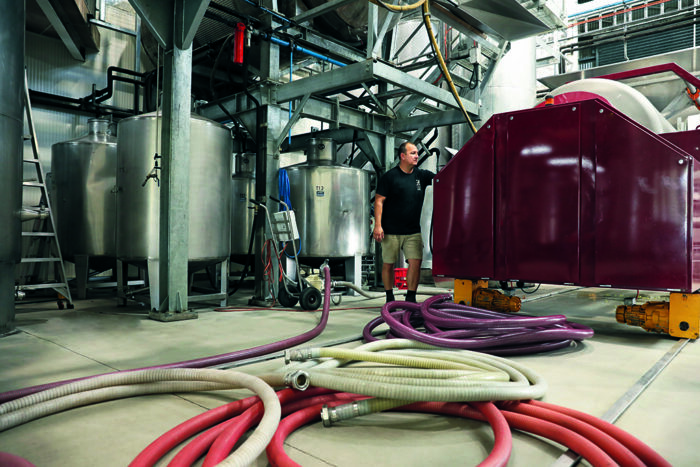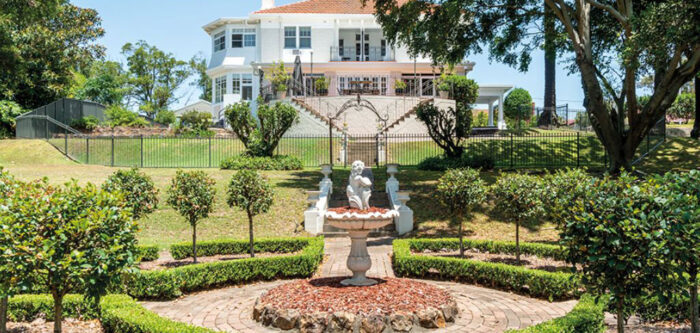
Cutting carbon – one barrel at a time
In our last edition, we explored initiatives by Hunter vignerons to combat climate change in their vineyards. Now, Cathy Gadd dives into their efforts to reduce their carbon footprint during the process of crafting, bottling and selling their delicious wines.
An impressive 65% of Australian wine drinkers prefer sustainably made wines, making it an area wine producers can’t afford to ignore. Sustainable Winegrowing Australia’s recent report showed a 48% growth in the uptake of the voluntary national certification program. Even with the industry facing extreme weather events and inflation pressures, the statistics demonstrate that sustainability is a major priority for producers.
Knowledge is power
Matt Burton, winemaker and owner of Gundog Estate explained, “the decades between 2000 and 2020 have been flagged as the ‘decades of fire’ with the hottest, driest vintages on record.
“I felt compelled to act and make serious changes to what and how we were doing things.” Consequently, he decided to enrol in a Graduate Diploma in Climate Science and conducted a carbon footprint assessment that provided huge amounts of data across the business.
“We assessed all the up and downstream areas which included the carbon footprint of all our suppliers. That’s the largest and the most difficult part and it’s an area that often gets put in the too hard basket,” he said.

Keith Tulloch Wines is accredited with the Australian Government’s Climate Active Program and was the first certified carbon neutral winery in the Hunter Valley. Alasdair Tulloch commented, “we went through our whole business, and analyzed our supply chain including packaging and transport. The results established our agenda.”

Margan Wines, another early pioneer, developed an Environment Management Plan (EMP) supporting the four pillars of sustainability: reductions in waste to landfill, energy, water use and greenhouse gas emissions. Lisa Margan explained, “you can’t manage what you can’t measure. We measured everything in our original audit and track to see what impacts the changes are having. It spurs you on when you can see the difference.”
Driving energy efficiency
Wine production uses a lot of electricity for machinery such as presses, crushes, and refrigeration, so energy efficiency is a significant area of focus. At Keith Tulloch Wines, a 65-kilowatt solar system provides more power than is needed, enabling them to export back to the grid.
“We’ve optimised all our winery machinery and operate them when the sun is out, plus we set up our refrigeration to use most of its load during daylight hours,” Alasdair shared.
They also replaced all their lights with LEDs, changed to electric forklifts which charge off the solar system and as a result, have seen their electricity use go down by more than 85%.
“A lot of our former practices were unintentionally wasteful. And whilst we’ve made significant investments, a lot of the changes ended up saving us money. Our solar system paid back in less than three years and with electricity price hikes, it just keeps delivering more savings.

“In 2017 our original carbon footprint was 660 tonnes. We reduced it by 10 tonnes by just having Co2 plumbed directly into the tanks for cooling. If you find ten small changes you can achieve significant reductions. Our gross emissions are now less than two thirds what they were,” Alasdair said proudly.
Four years ago, Mike de Iuliis of De Iuliis Wines implemented a solar system in their winery.
“Refrigeration is a huge part of the winemaking process, and we make wine in the hottest months of the year and process grapes at the hottest time of day. Solar has reduced our power bills by 75% so we’ve just implemented it at the cellar door as well,” he explained.
Margan has completed the transition from being fossil fuel dependant to being self-sufficient. They drove energy savings by putting timers on everything, by using LED lighting and implementing an energy efficient cooling system for their wine tanks. They’ve used solar energy for many years.
“On a sunny day we don’t draw anything from the grid. Next year we’ll be upgrading our solar system with new technology and adding a battery for storage,” Lisa said.
Read the full story in our Winter Edition of Hunter & Coastal Lifestyle Magazine or subscribe here.
Photography courtesy of wineries, by Chris Elfes and Dom Cherry

